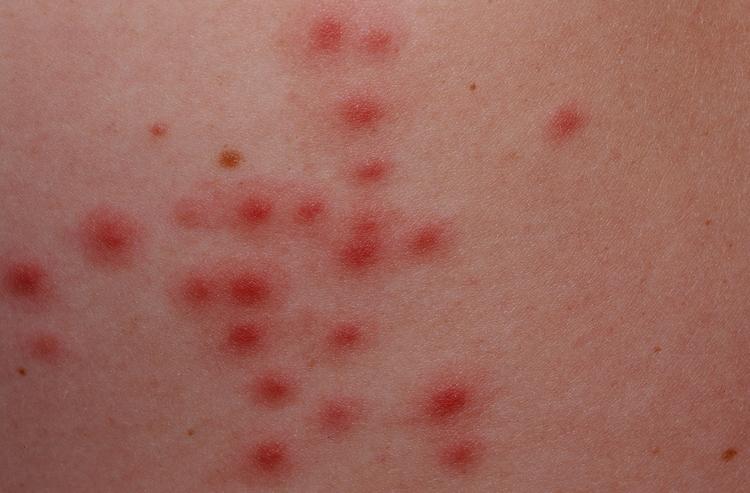What are the types of folliculitis?
Folliculitis can form as a result of several types of fungal or bacterial infections. The following include some of the more common types of folliculitis:

As its name suggests, hot tub folliculitis forms after spending too much time in a hot tub containing the bacteria Pseudomonas aeruginosa, according to the Centers for Disease Control and Prevention (CDC).
Regular swimming pools and water slides can also bring on the infection. The rash commonly appears as scattered red bumps. Areas of the skin covered by swimwear such as the buttocks are most prone to develop the rash, but it may also affect the skin directly exposed to the contaminated water. Other symptoms include itching and burning.
Hot tub folliculitis often resolves on its own. Topical treatments that may be helpful include silver sulfadiazine cream twice a day or white vinegar applied to the rash for 20 minutes 2 to 4 times per day. In severe cases, oral antibiotics may be prescribed.
Pityrosporum folliculitis forms when the yeast Pitysporum moves into hair follicles and spreads. An acne-looking rash erupts on the surface of the skin. Pityrosporum normally lives on the skin and causes no rash or other skin condition. It’s only when there is an overgrowth that pityrosporum folliculitis forms. Triggers include:
Bacterial folliculitis is the most common form of this condition. It usually develops when the bacteria Staphylococcus aureus — which exists on the skin always — enter the skin and infect the hair follicles. A cut or scrape can provide an entry point. Mild cases may be treated by a topical antibiotic, while more serious cases may require an oral antibiotic, too.









